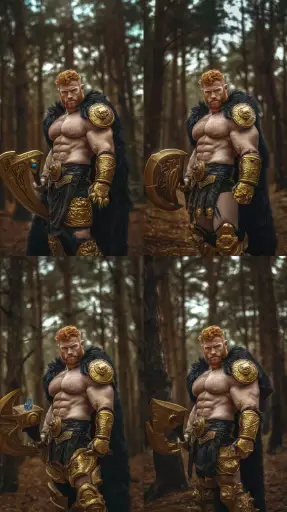Explore the Best AI Image Gallery

AI: The New Lens in Product Photography
The world of product photography is undergoing a seismic shift, driven by the rapid advancements in artificial intelligence (AI). This powerful technology is not just automating mundane tasks; its revolutionizing the creative process itself, offering unprecedented possibilities for capturing and presenting products in compelling new ways.
A Creative Revolution
Traditionally, product photography has relied heavily on skilled photographers, meticulous lighting setups, and post-processing magic. While these elements remain crucial, AI is introducing a new dimension of creativity by:
- Generating Unique Images: AI algorithms can create entirely new product images from scratch based on text descriptions or existing data. This opens up endless possibilities for visualizing products in different contexts, styles, and even fantasy realms.
- Enhancing Existing Photos: AI-powered tools can automatically enhance product photos, improving lighting, color balance, sharpness, and removing imperfections. This saves photographers time and resources while ensuring high-quality visuals.
- Creating Interactive Experiences: By integrating AI with augmented reality (AR) technologies, brands can create immersive product experiences where customers can virtually try on clothing, assemble furniture, or explore products in 3D environments.
Practical Applications Across Industries
The impact of AI extends across diverse industries:
- E-commerce: AI-generated product images can help personalize online shopping experiences, showcase a wider range of product variations, and create dynamic visuals that engage customers.
- Fashion & Apparel: Virtual try-on features powered by AI allow customers to experiment with different styles and sizes without physically trying them on, revolutionizing the online shopping experience.
- Real Estate: AI can generate stunning virtual tours of properties, highlighting key features and allowing potential buyers to explore homes remotely.
- Automotive: Manufacturers can use AI to create interactive 3D models of vehicles, showcasing detailed specifications and customization options to customers.
Navigating the Ethical Landscape
While the benefits of AI in product photography are undeniable, its crucial to address the ethical considerations associated with its use:
- Bias & Representation: AI algorithms can inherit biases present in the training data, potentially leading to unfair or inaccurate representations of products and people.
- Job displacement: Automation through AI may raise concerns about job losses for photographers and other creative professionals.
- Transparency & Accountability: Its important to ensure transparency in how AI is used to generate product images and establish clear lines of accountability for any potential misuse.
The Future of AI-Powered Product Photography
Looking ahead, the future of AI in product photography is brimming with possibilities:
- Hyper-Personalization: AI will enable brands to create personalized product images tailored to individual customer preferences and browsing history.
- AI-Driven Storytelling: AI can help craft compelling narratives around products, using visuals and text to engage customers on a deeper level.
- **Enhanced Sustainability:** AI can optimize production processes and reduce waste in the product photography industry.
As AI technology continues to evolve, its impact on product photography will only intensify. By embracing innovation while addressing ethical considerations, brands can harness the power of AI to create captivating visual experiences that resonate with consumers and drive business success.